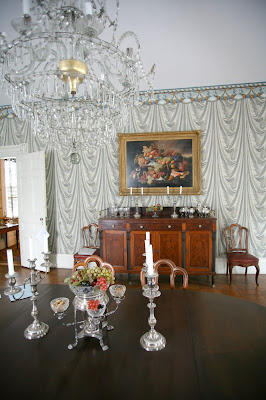On Friday, July 19 we are hosting a temperance themed party at
Of course temperance
advocates had their work cut out for them as alcohol was such an integral part
of American life. With coffee, tea, milk
and water considered unacceptable beverages, the only other alternative was
alcohol. There was the eye opener of rum
or whiskey in morning before a glass of beer or cider at breakfast. Offices, shops and factories often closed at
11 am and 4 pm for a quick nip or two.
Wine at dinner was followed by night caps to avoid night chills. There were other opportunities throughout the
day for a drink or two – social calls,
business transactions, birthdays, christenings, graduations, marriages,
funerals, elections, court sessions and the list goes on . For every affliction from teething to aches
and pains of old age alcohol was prescribed in one form or another (particularly
brandy, whiskey and fruit based wines).
In the 1820s and 1830s growing concerns for
occupational safety, public safety and personal health led to the development of
temperance societies like American Temperance Society, Washington Temperance
Society and Sons of Temperance. The
societies held conventions, encouraged men to sign pledge cards, circulated
petitions, and held lectures. By 1833
there were over 5,000 temperance societies in the United States
By the 1850s the temperance movement had lost momentum. The nation’s attention was focused on the approaching
of Civil War. European medical reports stated
that alcohol was dangerous in excess but alright in moderation. Prohibition legislation was either repealed,
modified or simply unforced. During the mid-1870s the movement would gain momentum
again. But instead of
moderation and personal choice, supporters would advocate for legislative bans
on all alcohol for everyone.
For more information on the history of alcohol in the United States and the temperance movement, see The Alcoholic Republic: An American Tradition by WJ Rorabaugh and Drinking in America: A History by Mark Edward Lender and James Kirby Martin.

No comments:
Post a Comment